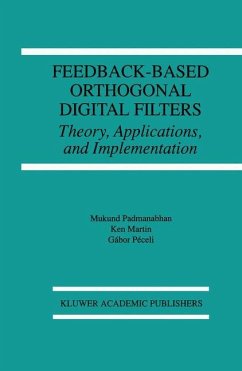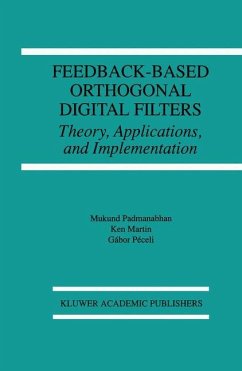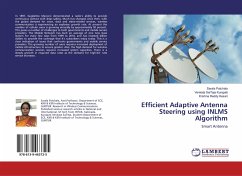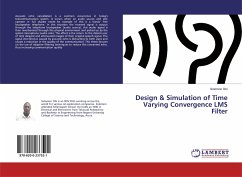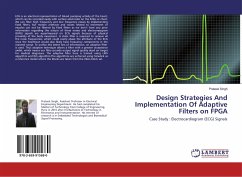
Design Strategies And Implementation Of Adaptive Filters on FPGA
Case Study : Electrocardiogram (ECG) Signals
Versandkostenfrei!
Versandfertig in 6-10 Tagen
24,99 €
inkl. MwSt.

PAYBACK Punkte
12 °P sammeln!
ECG is an electrical representation of blood pumping activity of the heart, which can be recorded easily with surface electrodes on the limbs or chest. We can filter high frequency and low frequency noises by implementing fixed filters, but motion artefacts and noises related to movement of muscles can not be filtered by fixed filters as we don't have any prior information regarding the nature of these noises and electromyogram (EMG) signals are superimposed on ECG signals because of physical proximity of the body movement. A static filter is required to remove all the noise frequencies, which...
ECG is an electrical representation of blood pumping activity of the heart, which can be recorded easily with surface electrodes on the limbs or chest. We can filter high frequency and low frequency noises by implementing fixed filters, but motion artefacts and noises related to movement of muscles can not be filtered by fixed filters as we don't have any prior information regarding the nature of these noises and electromyogram (EMG) signals are superimposed on ECG signals because of physical proximity of the body movement. A static filter is required to remove all the noise frequencies, which could overly abase the attribute of the ECG since the heartbeat would also likely have frequency components in the rejected range. To outfox this latent loss of information, an adaptive filter is used. Thus adaptive technique allows a filter with a greater acceptance ambit, which means our filter provide output signal quality dead on target for medical diagnoses. The adaptive filter here istrained using LMS algorithm and RLS algorithm.The algorithms are enforced using Simulink as a reference model where the blocks are taken from the Xilinx block set.








